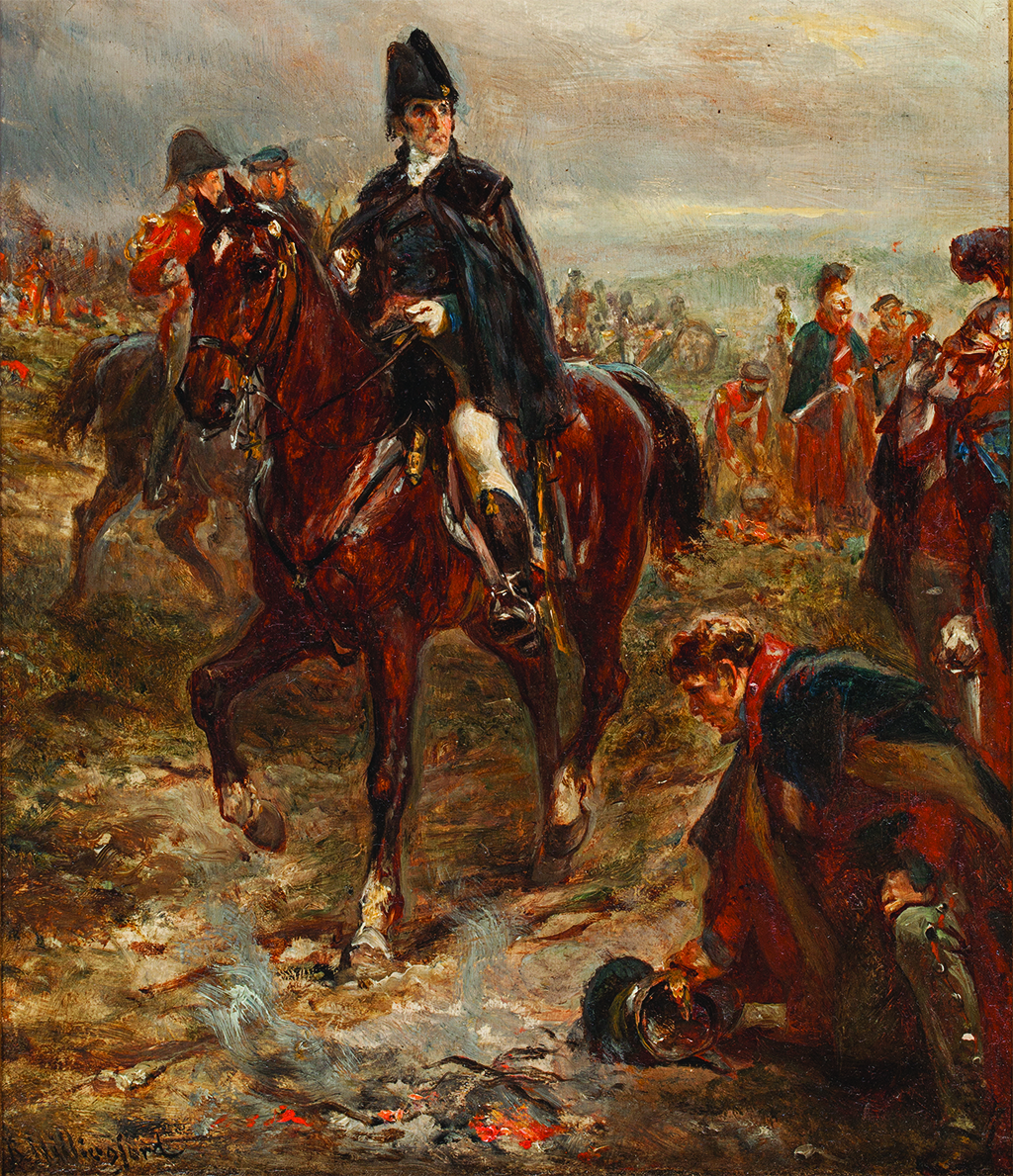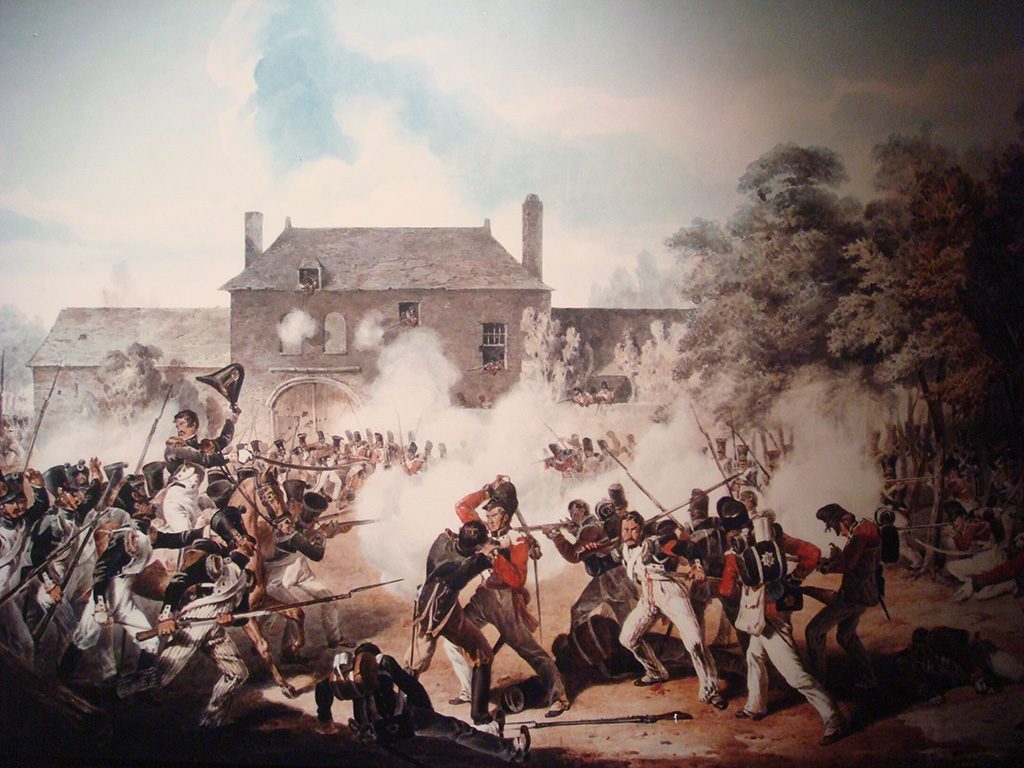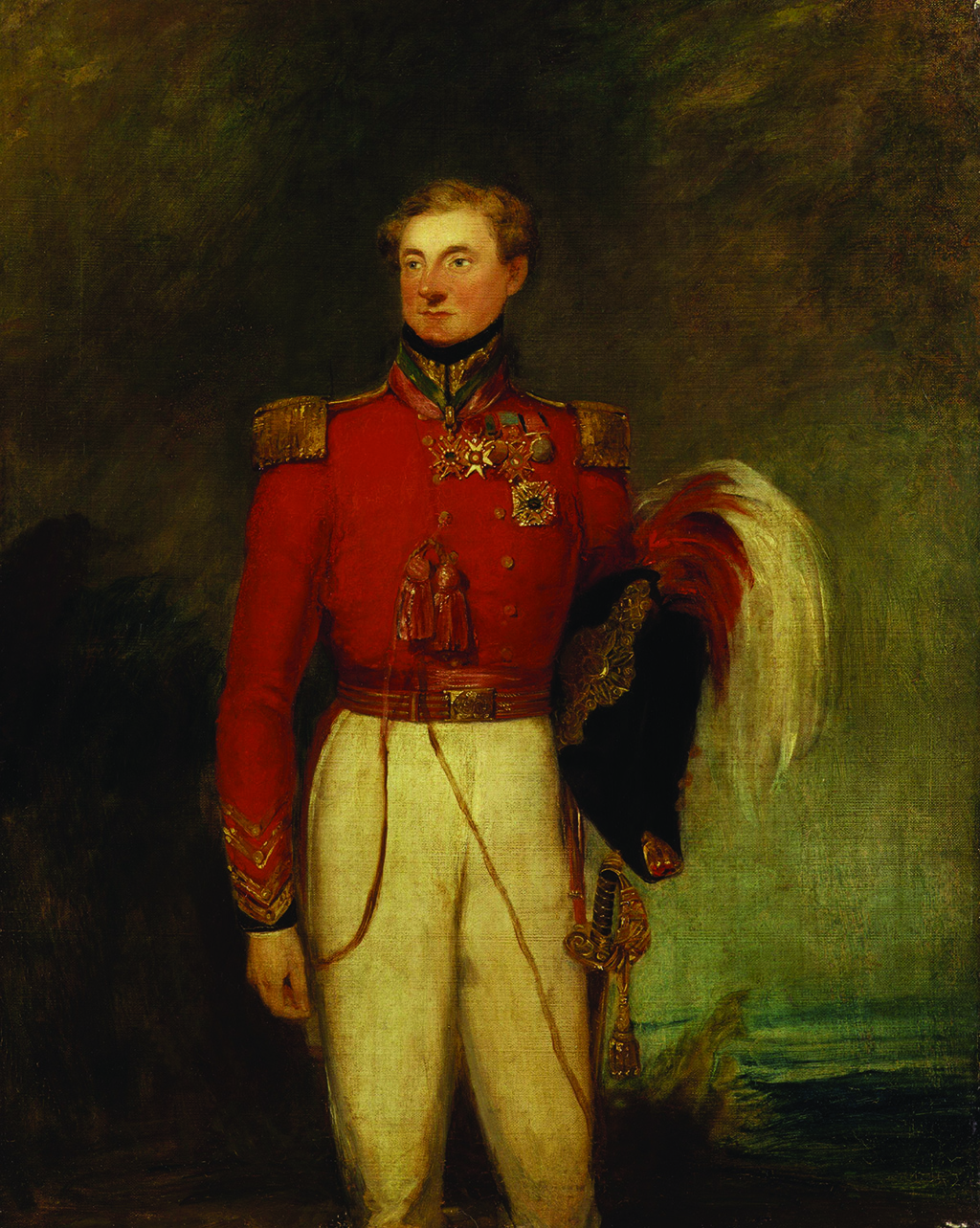
Scotland forever – the cry of the Royal Scots Greys
‘Scotland forever!’ – this was the cry of the Royal Scots Greys as they charged Napoleon’s troops at Waterloo – a decisive moment in an epic battle in which Scottish heroism played a crucial role.
It was the battle that changed the face of Europe: the Duke of Wellington, with his British and Allied army, defeated the Emperor Napoleon and his French Imperial Guard on 18 June 1815 at Waterloo, marking the climax of 22 years of war.
The battle, which celebrates its 200th anniversary this month, is perceived not only as the victory of Wellington over the Emperor but also as a German victory on account of the timely assistance of the Prussians and of the large percentage of Hanoverians and other German troops in the Duke’s polyglot army.
I would like to offer an alternative view: that Waterloo was arguably in large part a Scottish victory. There are two reasons behind this assertion. Wellington, when asked how the battle was won, said without hesitation that it all hung on ‘the closing of the gate at Hougoumont’.
He was referring to an episode early on in the battle, when the north gate of the chateau that formed the key defensive position on his right flank was forced shut after having been breached by the French. Had Napoleon’s troops taken the chateau, they would have dominated the flank and would simply have rolled up Wellington’s army.
James Macdonell, a colonel of the Coldstream Guards, had been put in command of Hougoumont by the Duke. His 200 men of the light companies of both the Coldstream and the Scots Guards were charged with holding the buildings and gardens of the chateau. From 11.30 on the morning of 18 June until the close of the battle that evening, the Guards, together with their Dutch and German allies, defended the chateau. Most crucially, when a French assault party managed to force open the north gate into the courtyard, it was Macdonell and seven of his men who through sheer brute strength managed to shut it again.
Macdonell’s actions at Hougoumont on that fateful day and his part in the saving of the chateau almost certainly ensured Welling ton’s survival until the arrival of the Prussians in the afternoon.

Wellington, by Robert Hillingford
Asked after the battle who might be the Waterloo veteran most deserving of an honorary payment, Wellington named Macdonell (who, needless to say, refused the money). So who was the heroic colonel? Macdonell was a highly decorated career soldier who had fought through the Spanish penin sula with Wellington, and who would later became Governor-General of Canada. He was the brother of Alasdair Macdonell of Glengarry, whose huge portrait by Sir Henry Raeburn now hangs in the National Gallery of Scotland.
A portrait of James, also by Raeburn, hangs in the Museum of the Isles at Armadale. It is ironic that while James’s portrait is hardly seen and little known, it is he who was the genuine hero, rather than his stay-at-home brother with his Highland fancy dress and warlike fantasies, whose painting in Edinburgh, seen by millions, has become one of the icons of Scottish culture.
From Hougoumont we must cross the battlefield to Wellington’s left flank to discover the next Scottish connection to victory. With Hougoumont preserved and starting to draw in an increasing number of French troops (eventually just 1,500 British Guards would occupy ten times their number during the day), Napoleon unleashed his main attack on the Allied line, sending in his 1st Corps, some 15,000 infantry, under the Count d’Erlon.
The attack was met first by the Allied 5th Division of British and Hanoverian infantry under General Sir Thomas Picton, whose battalions included three of Scottish Highlanders and the Royal Scots. In fact, with one of Picton’s brigades under an Edinburgh man, Sir James Kempt, Scots made up half of the total number of defending troops in this sector. (Apart from the designated Scottish regiments, it has been reckoned that second only to Irishmen, there were more Scots in Wellington’s regiments of ‘English’ redcoats than any other nationality.)
As d’Erlon’s men attacked up the slope, the 95th Rifles, hidden in a sandpit, opened fire with deadly accuracy; then the rest of Picton’s redcoats fired at close range. The French stopped in their tracks and it was then that Wellington sent in his cavalry.

Denis Dighton’s painting of the defence of the Chateau of Hougoumont by the Coldstream Guards
The Union brigade consisted of one English, one Irish and one Scottish regiment of cavalry, the Scots in question being the 2nd or Royal North British regiment of Dragoons, the Royal Scots Greys. As a regiment they had not fired a shot in anger for years, having been kept at home on ceremonial duties while Wellington fought his way through Spain. Many had seen action with other regiments before transferring, but Waterloo was the Greys’ last chance of Napoleonic glory – and they seized it.
As the Greys passed through the British infantry at a gentle trot (they never actually managed to charge, such was the dense press of enemy troops), legend has it that some of the Gordon Highlanders grabbed at their stirrups and went forward with them, crying, ‘Scotland forever!’
The three cavalry regiments surged into the French columns, converting them to a cowering mob. Cavalry sabres slashed with vicious force and those of the French who could run did just that back through the mud to their own lines.
While all three units of cavalry fought heroically, it was the Greys who took the worst casualties and arguably did the most damage, riding into the dense enemy column, scything men down and heading for the French guns. In the course of their counter-attack, one sergeant, Charles Ewart from Kilmarnock, a giant of a man and the champion fencer of the regiment, took a French eagle standard – one of the colours personally blessed by the Emperor, its flagpole topped by a gilded bird.
Ewart carried it back to Wellington and was promoted to ensign as a reward for his feat. His trophy, the eagle of the 45th French regiment of the line, now resides in Edinburgh Castle, centrepiece of the regimental museum of the Scots Dragoon Guards and protected by bulletproof glass lest some vengeful Frenchman attempt to reclaim it.
But the Greys went too far. They attacked the French guns but were themselves attacked by French lancers and cuirassiers and cut to pieces. Their brigade commander, Lord Ponsonby, fell, pierced by seven lance thrusts. Those who were able to rode back to the British lines.

This painting of
Colonel James Macdonell by William Salter hangs in the National Portrait Gallery in London
But of the 444 officers and men who attacked that day, only 246 survived unscathed, and 105 were killed or died of wounds soon after. Their tale is filled with anecdotes from the ‘Falkirk dizzen’ – the 13 men from Falkirk who fought together side by side – to the story of their commander, Colonel Hamilton, a poor Glasgow boy who had been adopted by a general and was last seen with wounds to both arms, riding back into the French with his reins gripped between his teeth.
Arguably, the action of the British cavalry, not least the Scots Greys, in that counter-attack stopped Napoleon in his tracks, decimating his 1st Corps and scuppering his masterplan. There are many other Scottish connections with the battle, including the fact that many of Wellington’s best commanders were Scotsmen.
The names on the plan of the battle speak for themselves: Byng, Maitland, Hepburn, Saltoun, Hunter-Blair, Ross, Douglas, Campbell, Dick, Macdonald, Dalrymple, Grant and Murray. Lastly, and most poignantly, we have the story of Wellington’s deputy quartermaster general, Sir William de Lancey. A Peninsular veteran of American descent, de Lancey had recently married at Greyfriars Kirk in Edinburgh the daughter of Sir James Hall, one of the brightest figures of the Scottish Enlightenment. De Lancey was mortally wounded at Waterloo and was nursed up to his death by his young wife, who left a moving account of her experience.
Perhaps it is this potent mix of heroism and tragedy that has ensured that Waterloo has never been forgotten. Fittingly, the bicentenary promises numerous commemo rations, from a 5,000-man re-enactment of the battle on the actual battlefield in Belgium, to a service at London’s St Paul’s Cathedral. In Scotland, at the end of June, Edinburgh will host a parade down the Royal Mile, led by a mounted troop of Scots Greys, and the following day there will be a Waterloo commemoration day in the Borders.
Ensign Ewart’s home town of Kilmarnock will also honour its hero in a number of events. Back in Edinburgh, a display at the National Museum of Scotland will mark the anniversary, and on 24 June auctioneers Lyon & Turnbull will present a Waterloo auction; among the lots are a rare painting of the Greys and Highlanders on the eve of battle, as well as numerous artefacts from the battle and the Napoleonic period, including swords, medals and paintings and even a lock of Wellington’s hair.
Iain Gale has been studying Waterloo for more than 40 years. His book on the Scots Greys at Waterloo, Scotland Forever!, was published by Birlinn in 2015. He has previously written an acclaimed account of the battle, Four Days in June. Iain regularly takes tours to the battlefields of Waterloo.
(This feature was originally published in 2015)
Click HERE to read more culture news and features from Scottish Field https://www.scottishfield.co.uk/category/culture/
TAGS

